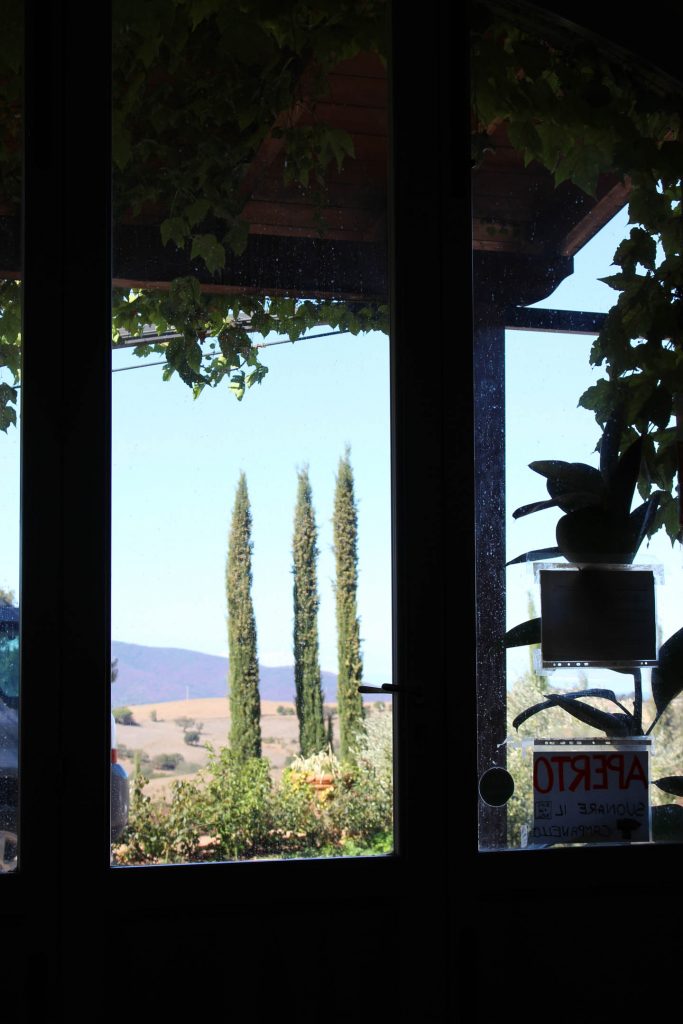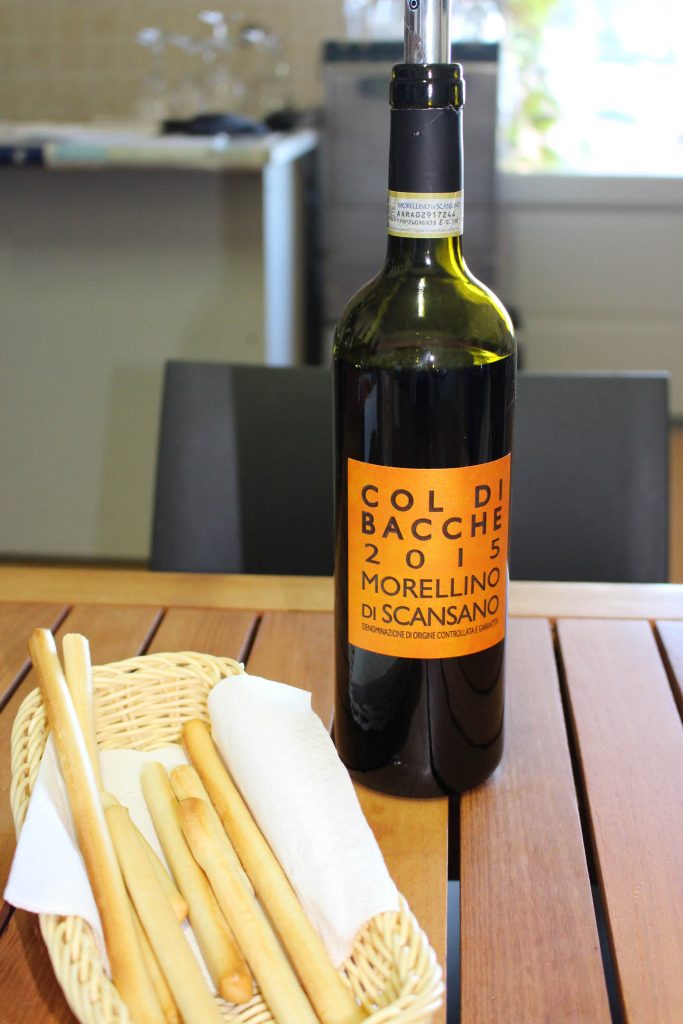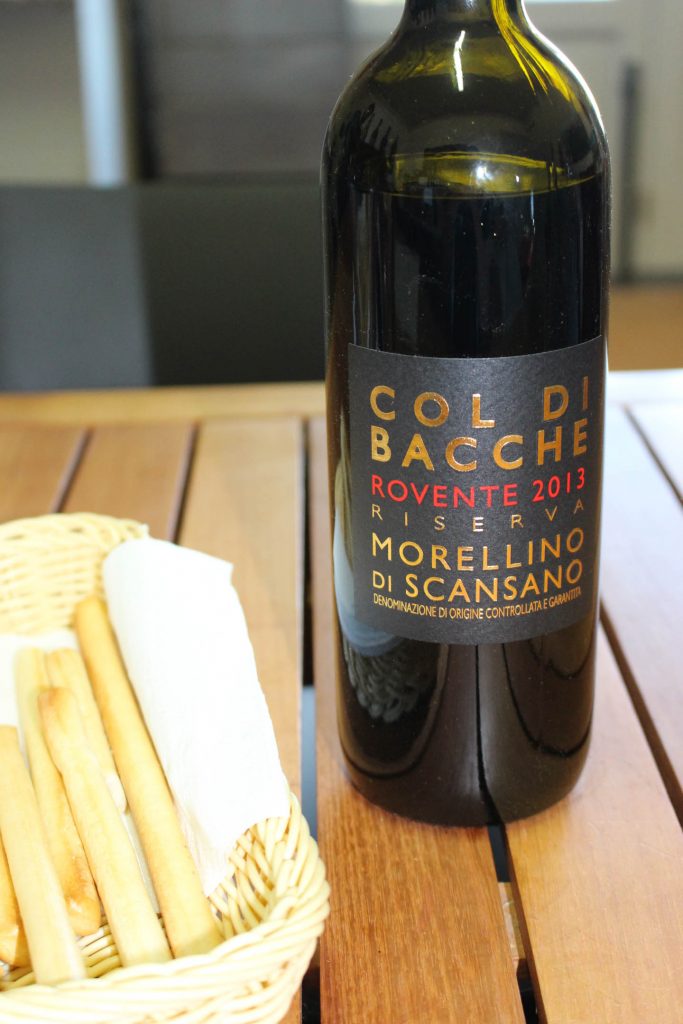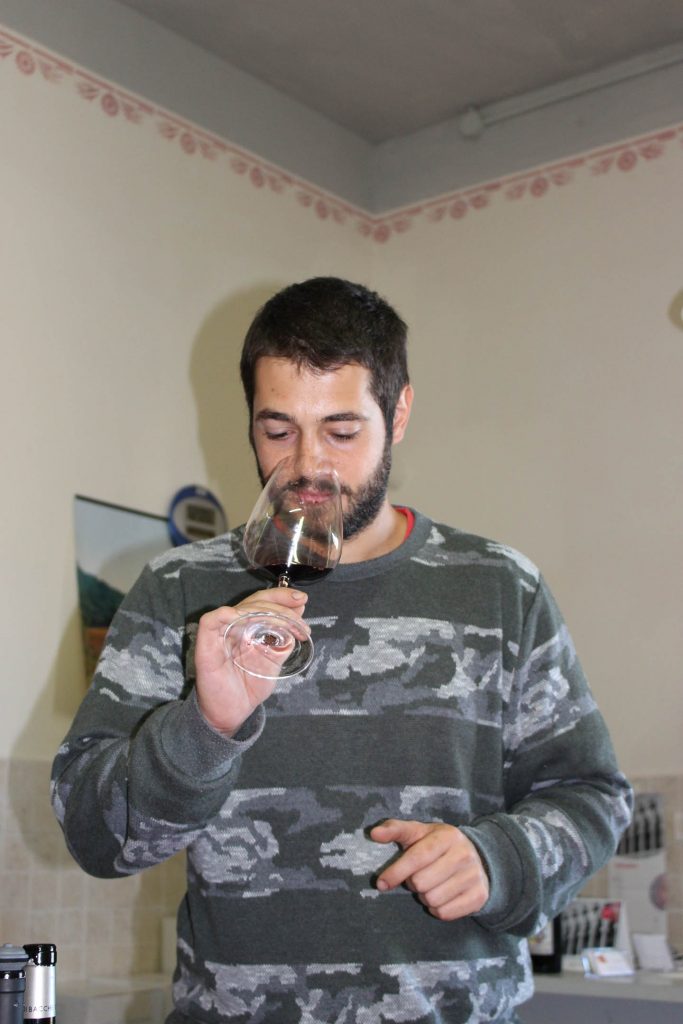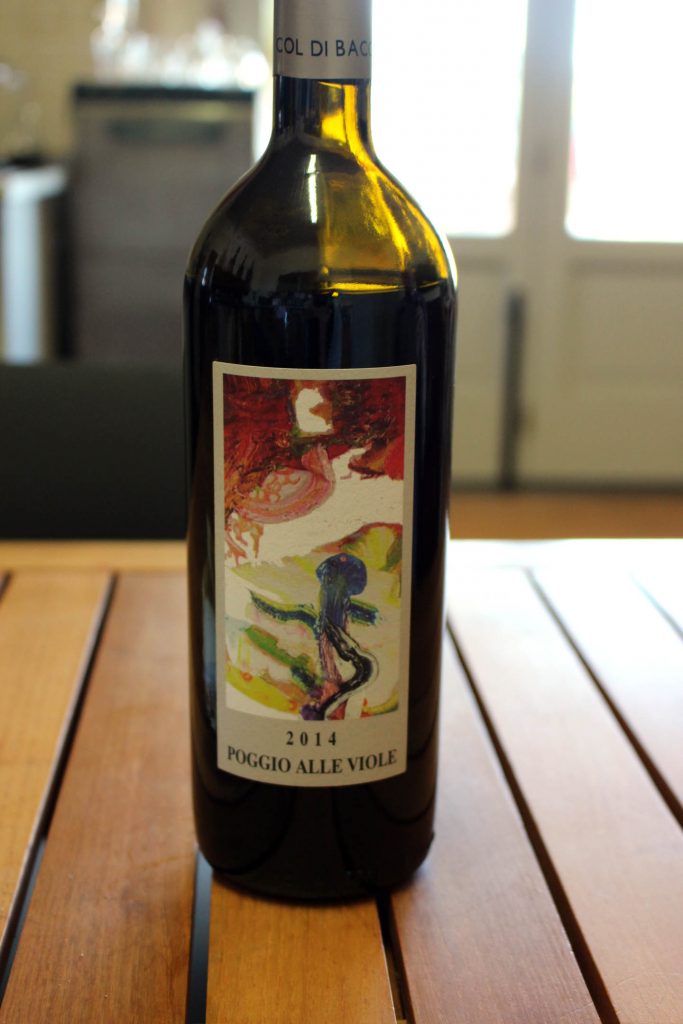Another guest post from The Wine Guy.
~~~~~~~~~~~~~~~~~~~~~~
Day 2
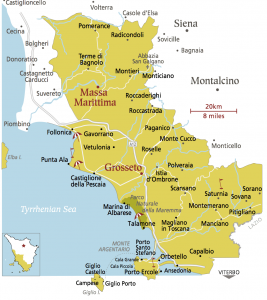 Leaving our hotel on a gorgeous early fall morning, we head south on the A1/E80 following the old Roman road to Rome, crossing the flatlands around the provincial capital of Grosetto, and entering the rolling hill country of the Monti dell’Uccelina. From there we branch inland into the rugged wine region around the mountain town of Scansano.
Leaving our hotel on a gorgeous early fall morning, we head south on the A1/E80 following the old Roman road to Rome, crossing the flatlands around the provincial capital of Grosetto, and entering the rolling hill country of the Monti dell’Uccelina. From there we branch inland into the rugged wine region around the mountain town of Scansano.
The region around Scansano takes its name from a varietal of the Sangiovese called Morellino. One of the more romantic theories around the name is that it comes from “morello”, which literally means “brown”, the color of the region’s horses. More down to earth observers suspect it derives from the morello cherry, a dark red cherry known for its acidity and tartness. In any case, the local Sangovese has been granted the highly prized DOCG status since 2007 as Morellino di Scansano. A Morellino di Scansano must consist of at least 85% local Morellino, with up to 15% coming from a list of other permitted varietals maintained by the Tuscan wine authorities. This makes it essentially a local version of the wines of Chianti. Morellino can come in two subtypes, the Morellino di Scansano, which does not require any oak aging and is primarily a light, crisp everyday drinking wine, and the Morellino di Scansano Riserva, which must be held for two years after the harvest, with at least one of these years in oak, a much heavier wine with considerable aging potential.
Our first goal in the region is Col di Bacche, just outside Montiano in the high hills around Montiano. This relatively new property of 13.5 hectares rises above the surrounding hills and offers a splendid view of the bright blue Mediterrenean in the distance. It was first planted in 1998 with the first release appearing in 2004. It has rapidly advanced, becoming one of the premiere wineries in the area. We are greeted by Cosimo Carnasciale, son of the founder. Before trying the wines, we talked a bit about the intense heat and drought and its probable effect on the vintage. Cosimo was very upbeat, explaining to us that the area around Scansano is considered the hottest part of Tuscany, and that the weather there had been hot, but not drastically so by local standards. He’s expecting lower yields, but the quality is high and there has been no signs of diseases, which seem to worry Tuscan winemakers considerably more than the weather.
We began with the Vermentino, which was an interesting contrast to the Narà which we had tried the day before. Here, the nose was decidely fruity and florid, with very pleasant acidity that did not overpower but promised a good pairing with fish, antipasti and milder salamis.
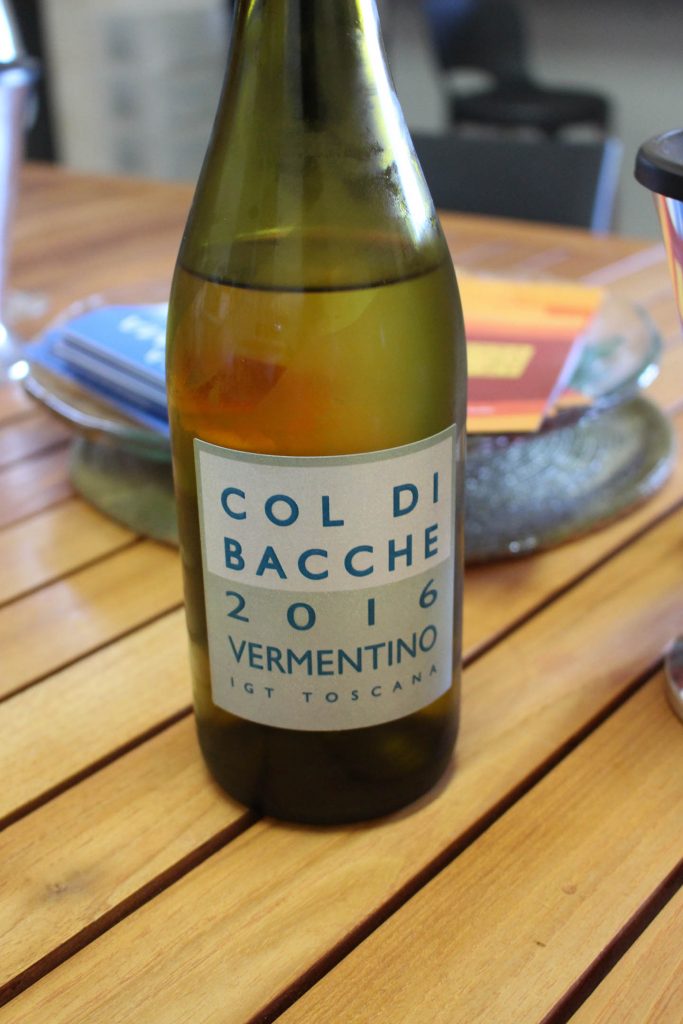 We followed this with the 2015 Morellino di Scansano, the lighter of the two Morellinos produced here. It’s a ruby red wine meant for relatively early drinking, although it has some aging potential with 40% seeing five months in old French oak while the majority undergoes clarification is stainless steel tanks. This yields a well-structured fruity wine with soft tannins and notes of vanilla and strawberries. It’s lovely now.
We followed this with the 2015 Morellino di Scansano, the lighter of the two Morellinos produced here. It’s a ruby red wine meant for relatively early drinking, although it has some aging potential with 40% seeing five months in old French oak while the majority undergoes clarification is stainless steel tanks. This yields a well-structured fruity wine with soft tannins and notes of vanilla and strawberries. It’s lovely now.
We next turned our attention to the Morellino di Scansano Riserva Rovente Riserva 2013. The flagship. This wine is made from a hand selection of the best grapes with a maceration 18 to 21 days to express the full potential of the harvest and aging in new French oak for 12 months. “Rovente” is Italian for “fiery” or “passionate”, and the wine expresses these sentiments well, with a warm, round nose, mouth-filling, spicy body and a full finish. This wine is built to go the distance, and should reward 10 years or so of aging. It is considered one of the best Morellino di Scansano by many of Italy’s leading wine journals.
Factoid: Cosimo remarked that in the future, the wine will be labelled solely Morellino di Scansano Riserva, dropping the word “rovente”, which can also mean “sizzling” or “scorching”. He says the winery has decided this is a bit over the top now that the vineyard has found its place among the top producers.
As his final offering, Cosimo brought out his pièce de résistance, the 2014 Poggio alle Viole (Hill of Violets), his version of a Brunello di Montalcino. It is 100% hand selected Sangiovese, as is Brunello from what he considers his best parcel and sees 15 months of aging in small oak barrels. (Brunello actually requires 36 months) Oddly enough, he is not allowed to put the DOCG of Morellino di Scansano on the label: although the DOCG requirements mandate that the wine should be mostly (85%) Sangiovese, it cannot be 100% Sangiovese. It’s an Italian thing–Go figure.
In any case, the wine is lovely, but a bit young. Dark ruby red with a gingery nose with some peppery hints. Lot’s of body in the mouth and a deep finish. The tannins, not overpowering, but clearly present, hint at a wine that could improve for many years. Cosimo thinks it could go 20 years. This is clearly the masterpiece of the house and Nancy, who usually trusts that I will buy everything in the house, took no chances on this one, insisting we had to have some. This is high praise indeed.
Leaving Col di Bacche heading south, we pass lovely hill town of Manciano in Toscana with its magnificent walls and medieval Fattoria della Campiglio, its stronghold. It’s a lovely day and we’d love to visit, but we want to get to Scansano for lunch and it looks like a bit of a drive. And so it is. The SS323 linking Scansano and Manciano winds it way up 500 meters through brush and pine forests with wonderful views towards the coast and into the mountainous region separating the Maremma from central Tuscany. The top is down and the weather is perfect. A lovely drive.

